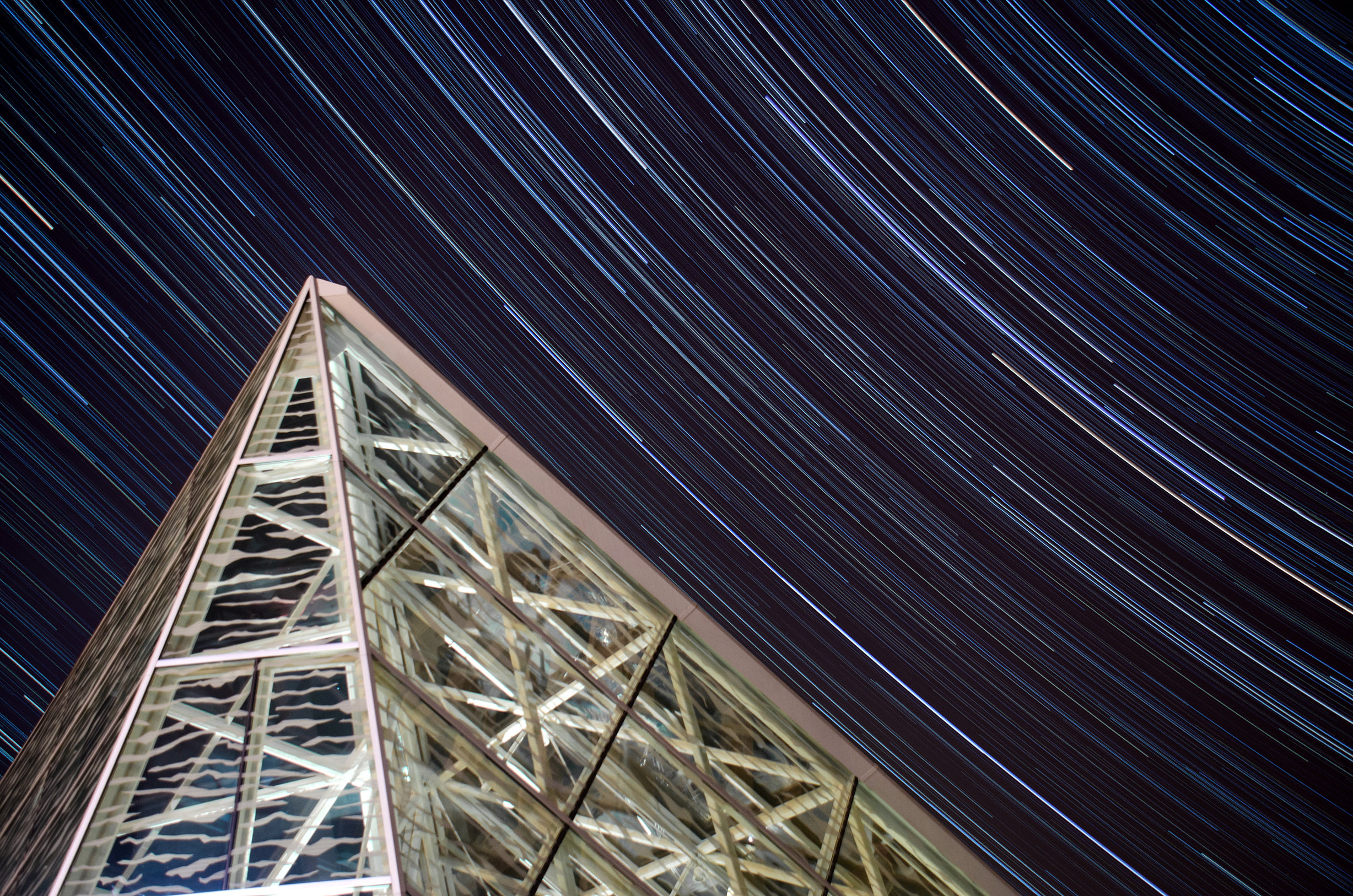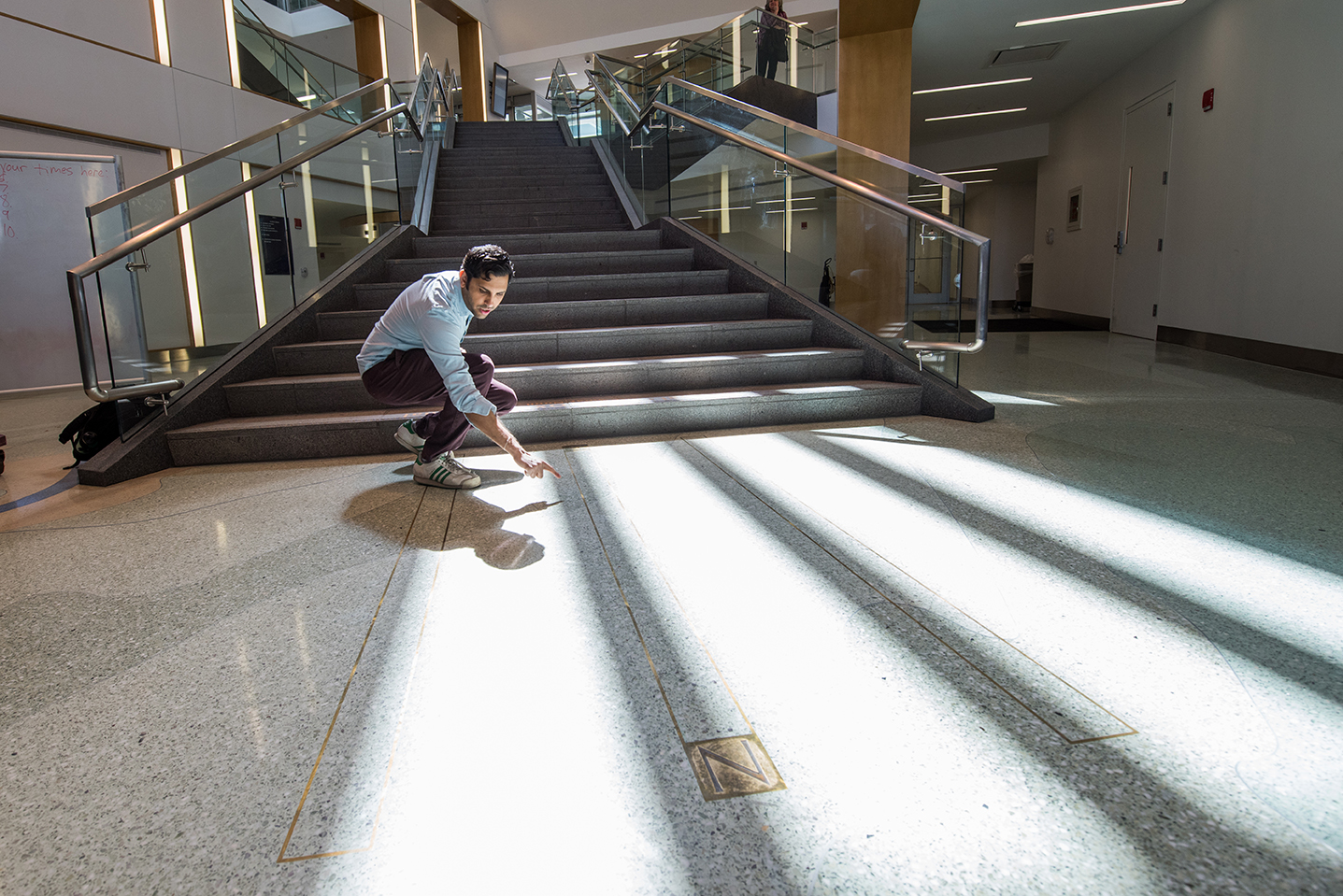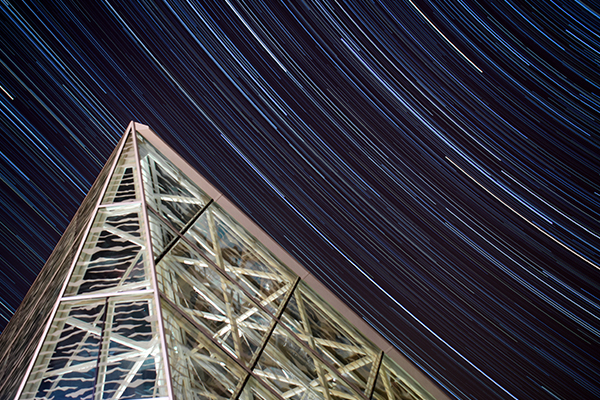Look up: Planetarium director embraces remote teaching and learning opportunities
 “The nice thing about the universe is that it is way bigger than all of us,” said Raj Pandya, director of the John R. Kirk Planetarium and lecturer of physics & astronomy at SUNY New Paltz. “Even in this extremely difficult time, it is humbling to know that the night sky will continue marching on in predictable patterns.”
“The nice thing about the universe is that it is way bigger than all of us,” said Raj Pandya, director of the John R. Kirk Planetarium and lecturer of physics & astronomy at SUNY New Paltz. “Even in this extremely difficult time, it is humbling to know that the night sky will continue marching on in predictable patterns.”
Pandya, like all other New Paltz faculty, has been working to adapt to remote teaching for the remainder of the spring semester. That process comes with special difficulties in hands-on physics labs and planetarium lessons with 3D visualizations, but Pandya says his students and colleagues in the Department of Physics & Astronomy are up to the challenge.
“I’m grateful to my colleagues for their innovative ideas as we embark on this adventure together,” said Pandya. “We are coming up with ways to try to simulate the real lab experience as much as we can for our students. My Zoom office hours are often filled with students asking questions and participating in discussions to help each other grasp the highly visual nature of the course. I’m inspired by their commitment to the coursework and willingness to engage in this new way.”
Pandya has proven especially adept finding new ways to inspire students to train their eyes on the night sky. Prior to the COVID-19 pandemic, he hosted public viewings at the John R. Kirk Planetarium on the first and third Thursday of each month. With those shows cancelled until further notice, Pandya is encouraging community members to exchange the Planetarium’s digital simulations of the sky with the real thing.
“When we look at the moon, we can get a sense of connection knowing that others around the world may be taking in the same inspiring view,” said Pandya. “I very much miss interacting with students and live audiences. For me, teaching astronomy and physics is best done in person so that people can see and feel the elegance of the universe. It’s hard to convey this remotely, so I am looking forward to teaching and leading planetarium shows in person again. For now, we share the skies.”
It helps that the week ahead brings some interesting opportunities for astronomical study. Pandya offered suggestions for unique viewing experiences on two nights in particular:
April 22, 2020
The Lyrids meteor shower will peak on April 22. A modest showing, viewers can expect about 10-20 meteors (shooting stars) per hour.
April 26, 2020
A barely visible waxing crescent moon will be in conjunction with Venus. Look to the west just after the sunset to catch this close pairing. Venus, still dominating the dusk sky as it has this whole year, will look like a really bright star. It will be at brightest on April 28.

More information about physics and astronomy at SUNY New Paltz is available online.

